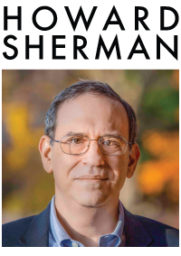Four words. Why do four words bother me so much?
After all, they appear in one review of an As You Like It production at the National Theatre in London that I’m highly unlikely to ever see. So why are these four words – which appear in a parenthetical clause, by the way – still on my mind a week after the review, by Dominic Cavendish in The Telegraph, was published? Well, I guess we should start with the four words in question.
“Man mountain black actor.”
Have I taken these words out of context, in order to emphasize them? I have certainly extracted them from a much longer sentence, but that’s because they are so fleeting in the overall review as to pass by unnoticed many readers. Here’s the full sentence:
“A match is set up for Orlando against the wrestler Charles (man-mountain black actor Leon Annor in shiny gold cape) – this test of mettle is conducted on crash-mats with lots of flashing lights, pounding rock-music and moronic chanting by the spectators.”
My first question is, simply, does the actor’s race matter? None of the other actors are identified by their race in the review, although there are other actors of color (or to cite the UK term, “BAME actors,” referring to Black, Asian and minority ethnic) in the production. Is there any legitimate reason for calling out this one actor’s race, since it is not being discussed as germane to any interpretation of the production or the particular scene. It is, so far as I can tell, casual and irrelevant. Which makes it stand out to me all the more.
Combined with “black,” does “man mountain” mean to imply that the character is in some way more dangerous or threatening? It could certainly be read that way. Would that have been mentioned if Annor was white? Of the more than a dozen reviews I read, many of which don’t mention Annor at all, his size is only mentioned by Matt Trueman for Whatsonstage.com, who simply notes that the actor is “large,” without any racial identification. Another critic, Quentin Letts in the Daily Mail, made note of a “plump shepherdess” in the production, which could prompt its own questions about whether size mattered at all in referring to an actress, but he didn’t see any need to point out that she is white. So I think it’s fair to say that Cavendish is alone in choosing to call Annor the equivalent of “a giant black man,” a construct which I would hope would set off alarms of caution to any writer or editor on either side of the Atlantic. Though in this case, it obviously didn’t.
Set on the path of investigation by these four words, I did find one other review that touched upon the race of the actors in this production. On Londonist.com, Franco Milazzo wrote, “The colourblind casting of Wringer is a masterstroke, his austere tone providing just the right level of gravity.” His reference is to Leo Wringer, a BAME actor, as Duke Frederick, and it’s fairly puzzling as well, even though it’s laudatory. After all, if Milazzo acknowledges the casting as colorblind, why bring it up at all, and why bring it up specifically when referring to a black actor, rather than a white one? Is it possible that when Milazzo speaks of “austere tone” he is referring to skin tone? That certainly seems to be part of the construct. But I hope it’s an accident.
In the examples I’ve cited, “austere tone” and “man mountain” might not be worth mentioning on their own, but when combined with the only references to race, both implied and explicit, they seem to me wholly gratuitous, even if they were done without any deep thought as to their implications. But it is the likelihood that they were casual statements by white critics about actors of color that I find so worrisome, since nowhere along the path from writer to editor to copy editor to publication did anyone apparently suggest that these mentions or constructions might be offensive, reinforcing racial division.
I think it’s important for me to note that I was questioned about my use of the phrase “female directors” just a week ago, when writing about the casual disregard of Pam MacKinnon in the headline of a story in which she was the main subject. It was raised because I made mention of MacKinnon as “one of New York’s most recognized female directors,” which wasn’t casual, yet even in the context of an essay about equality could give the impression of setting women apart from men in a subordinate way. In hindsight, perhaps it wasn’t a necessity that I address gender at that point, and it may well have undermined the main point I was discussing. I did not remove the reference because, even with a note about such an edit after the fact, I felt it would have been dishonest. But I acknowledge that my own intent may not have come across clearly, and therefore failed.
My exploration of racial references in reviews of As You Like It in the UK are in no way meant to be attacks on the British arts press or to suggest we don’t face the same problems in the US media. Cavendish’s review simply happened to say what in my opinion was the wrong thing at the right time. That is to say, I saw it at a moment when I am on ever more heightened alert to what some define as micro-aggressions by the members of the arts press, who are hardly alone in needing to grapple with their language choices surrounding the subjects of race, gender, and disability, to name but three. There are times, especially given the limited amount of space afforded to arts coverage, when mentioning race can be at best superfluous and at worst insidious.
I find myself reverting to a sentiment that I’ve expressed before about the arts, which is that we have the opportunity, and in my opinion the mandate, to model a better world on stage, on screen and behind the scenes. To achieve that, we also need those who cover the arts to be our partners in those efforts, so that there is consistent messaging not only within the work itself but in discussions, considerations and reporting on the work, writing which reflects equality and eradicates bias, be it subtle or overt, at every turn.
Howard Sherman is the interim director of the Alliance for Inclusion in the Arts and director of the Arts Integrity Initiative at The New School College of Performing Arts School of Drama.




